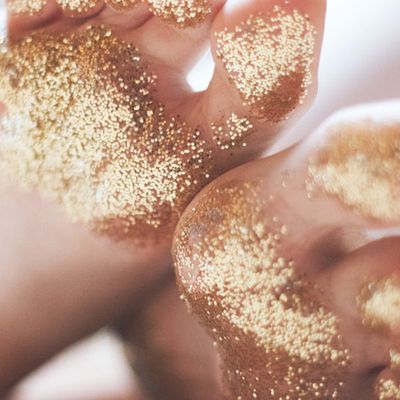
How To Properly Take Care Of Your Feet, According To A Top Podiatrist
Treat Calluses Quickly
It’s vital you keep on top of calluses to ensure they don’t become a problem. Calluses are an extended area of thickened, hard skin on the feet that usually occurs as a result of friction or pressure from inappropriate footwear, a bony prominence or a particular style of walking. If you often get calluses on your feet, I recommend regularly (once or twice a week) filing with an emery-type foot file or pumice and ensure you’re applying moisturiser daily. If a file doesn’t do the trick, see a podiatrist who can easily remove the hard skin safely with a scalpel.
Look For This Key Ingredient
If you’re prone to dry, hard skin and/or cracked heels, seek out foot creams and products that contain the key ingredient, urea. It’s a great choice for soothing dry feet, as it helps to penetrate the deeper layers of the skin, for maximum softness and hydration.
See A Podiatrist For These
Hard Corns are caused by pressure or friction often over bony areas, such as a joint. They have a central core which may cause pain if it presses on a nerve. The difference though, is you should always seek out a podiatrist’s help for corns, unlike the DIY options available for calluses.
Corns can be safely and painlessly removed with a scalpel, usually providing instant relief (and prettification). A podiatrist will also assess why you are developing corns and give you information on how to reduce the risk of them recurring. Filing the area, using padding or a toe separator can also help. But it’s worth bearing in mind these options may only provide some relief, as a file will not remove the central core. I also recommend avoiding the use of medicated corn plasters as they contain acid that can burn the skin and cause a wound.
You Should Never Ignore This
It’s one of the most common issues I see people for, but so many people leave their fungal nails unchecked. You should seek advice from your GP or a podiatrist if you suspect you have one immediately as they can take a sample of the nail to be tested. Luckily, treatments and formulations mean fungal nail can be treated easily at home. You can get anti-fungal nail lacquers which can purchased over the counter – but it’s worth noting these can take up to a year or more to work as it can take this long for the nail to grow out fully. Alternatively, your GP may prescribe oral medications.
Care For Your Cuticles
While I don’t treat cuticles as part of my podiatry consultation. At the salon a nourishing cuticle serum or oil is recommended to keep them conditioned and healthy. I strongly advise you resist the urge to cut them as it can result in damage or a break in the skin, which in turn CAN lead to infection.
Too Much Foot Cream
This may sound counterproductive but too much can seep in between the toes which should be avoided at all times, as infections thrive in a damp, soggy environment. If you do apply cream and you can feel it in your toes, run a towel through them to make sure they’re completely dry. This will help to prevent any maceration and unwanted infections, like athletes’ foot.
How To Treat Ingrown Toenails
These commonly occur as a result of not cutting your toenails properly or cutting them too low down at the sides. Always make sure you cut straight (never down the sides) and file smooth. It can also be a genetic issue, or they can be caused from the pressure of tight footwear, socks and even too much sweat can make the skin fragile. Again, it’s a common issue but there are some easy fixes. Firstly, visit your podiatrist who will remove the offending spike of the nail there and then. A sterile dressing will be applied to keep everything protected. It’s trickier if you persistently suffer from ingrowing nails – you may need to undergo a minor surgical procedure (Partial Nail Avulsion) under local anaesthetic. The edge of the nail will be removed, and the chemical phenol is applied to prevent that area re-growing and causing any more problems.
Use Waterproof Plasters For These
Blisters are fluid-filled lesions which occur as a result of pressure and friction. Usually, they’re the result of poor-fitting footwear or because of a foot deformity. I recommend applying some padding to cushion the area. Using a breathable waterproof plaster can help plus it’s also a great way of hiding them if you’re wanting to slip on some sandals. They’ll usually clear up themselves within three to seven days. However, they can become a more serious concern if you have diabetes and don’t heal as easily, so it’s important at this stage you seek further professional advice.
Rehydrate After Wearing Sandals
Summer = sandals, which is great for the freedom of our feet, but they also have very low resistance, offer very little support and expose the skin to the elements. This in turn dehydrates the skin and often results in cracked heels and dry, flaky skin. While you can’t put away the sandals for good, try wearing good-fitting footwear to get you from A to B, changing into your sandals when you have less walking to do. This will provide you with better shock absorbency while the cushioned sole will keep your feet well protected and supported. It also goes without saying that a warm soak and a slick of some hydrating cream will work wonders on worn out feet.
DISCLAIMER: We endeavour to always credit the correct original source of every image we use. If you think a credit may be incorrect, please contact us at info@sheerluxe.com.